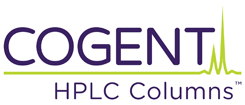This is an untrue statement that can lead chromatographers to frustration as THERE IS an alternative mode of chromatography that surpasses HILIC in reproducibility, precision and the ability to separate polar compounds.
It is well documented that Aqueous Normal Phase HPLC ANP is a very viable alternative to HILIC for polar compounds and in many cases superior to HILIC for several reasons.
Some important scientific information to help you understand this statement.
One example is, strong sulfonic acids that show little retention on HILIC columns. Also, this retention will further decrease as the pH is raised; for example, from pH 3 to pH 9. This has been reported, as attributable to increased solute repulsion of fully ionized acids from increasingly ionized silanols on HILIC columns. Cogent TYPE-C™ columns do not have silanols on the silica-hydride surface hence, there is no ionic repulsion of these types of compounds.
NOTE: In general, it is best to avoid working at high pH for both the stationary phase and your HPLC instrument’s up-stream, high pressure, and down-stream zones.
One might think that, clearly, ionic interaction effects (both attractive and repulsive) could be minimized or in some cases even eliminated by using high buffer concentrations. These buffer extremes are not needed in ANP mode making the TYPE-C™ columns excellent for MS detection and, there are no selectivity advantages using these columns at pH 9.
For HILIC columns, simple organic acid additives, such as 0.1% formic and acetic acid can give poor peak shapes for some acidic and basic solutes. In ANP, both additives work well as they help ionize the analytes.
Due to longer retention times in ANP, gradients are often used to elute analytes in a reasonable period of time. This is an important tool for every chromatographer.
Another analytical tool that is sometimes needed in HILIC is the use of non-volatile salts that range from concentrations of 5-120mm. They are used to control partitioning into and out of the on-column water layer which is found in all HILIC columns. TYPE-C™ columns need far less salt for good results, usually15mM is the maximum needed and often the starting point is 5mM. It is well documented that TYPE-C™ columns do not have a water layer and therefore, the use of higher salts concentrations are not needed for good separations in ANP.
Retention is affected by the thickness of the variable, on-column, water layer that all ordinary silica columns have. Managing this water shell is a problem with respect to re-equilibration and reproducibility for HILIC columns. Due to the silica-hydride surface on TYPE-C™ columns this hydration shell does not form; therefore, they equilibrate quickly with very reproducible results.
Changing the stationary phase is perhaps the most effective way to change the selectivity of a HILIC column separation. With Silica-Hydride columns there are certain phase advantages for some analytes and they usually require only adjustments in mobile phase composition or pH. An example is the Diamond Hydride™ column which can retain a broad range of hydrophilic and some hydrophobic compounds.
Using injection solvents of higher eluotropic strength than the mobile phase (that is, increased water concentration) in HILIC gives increasing peak shape deterioration. This can be quite limiting and is not the case with TYPE-C™ columns. We have successfully retained and separated samples with high water concentration, and you can too.
On a HILIC column, it has been reported that full isocratic equilibrium can require more than 20 minutes (> 40 column volumes) when purging 100× 2.1mm columns at 0.5 mL / min. In gradient elution, a repeatable, only partial equilibrium can be achieved, with an equilibration time of 5 min, implying that HILIC is normally used only partially equilibrated. TYPE-C™ columns FULLY equilibrate in less than 3 minutes compared to HILIC. Since retention and selectivity are dependent on the water layer in HILIC, they will be significantly reduced under partial equilibrium conditions which is not desirable.
It has been frequently reported that Retention Time Instability and Drift are common with HILIC columns. The water layer’s possible multiple variability are a fundamental property of HILIC columns that can often cause changes in retention time.
All TYPE-C™ phases perform in both ANP and RP compared to HILIC phases that do not provide substantial retention in RP. The dual retention nature of TYPE-C™ columns also makes it possible to analyze samples with both hydrophobic and hydrophilic compounds in a single run. Also, compounds with significant hydrophobic and hydrophilic components can be analyzed in either RP or ANP providing two options for optimizing retention and selectivity.
Finally, only the Cogent Diamond Hydride™ has successfully separated peptide samples from the most hydrophobic to the most hydrophilic in a single run.
So, there are not only alternatives to HILIC columns, there is a better alternative: Cogent TYPE-C™ Silica based HPLC columns and some important applications that are possible in Aqueous Normal Phase ANP have not been successfully demonstrated in HILIC.
See Wikipedia Definition of Aqueous Normal Phase. Click HERE.


